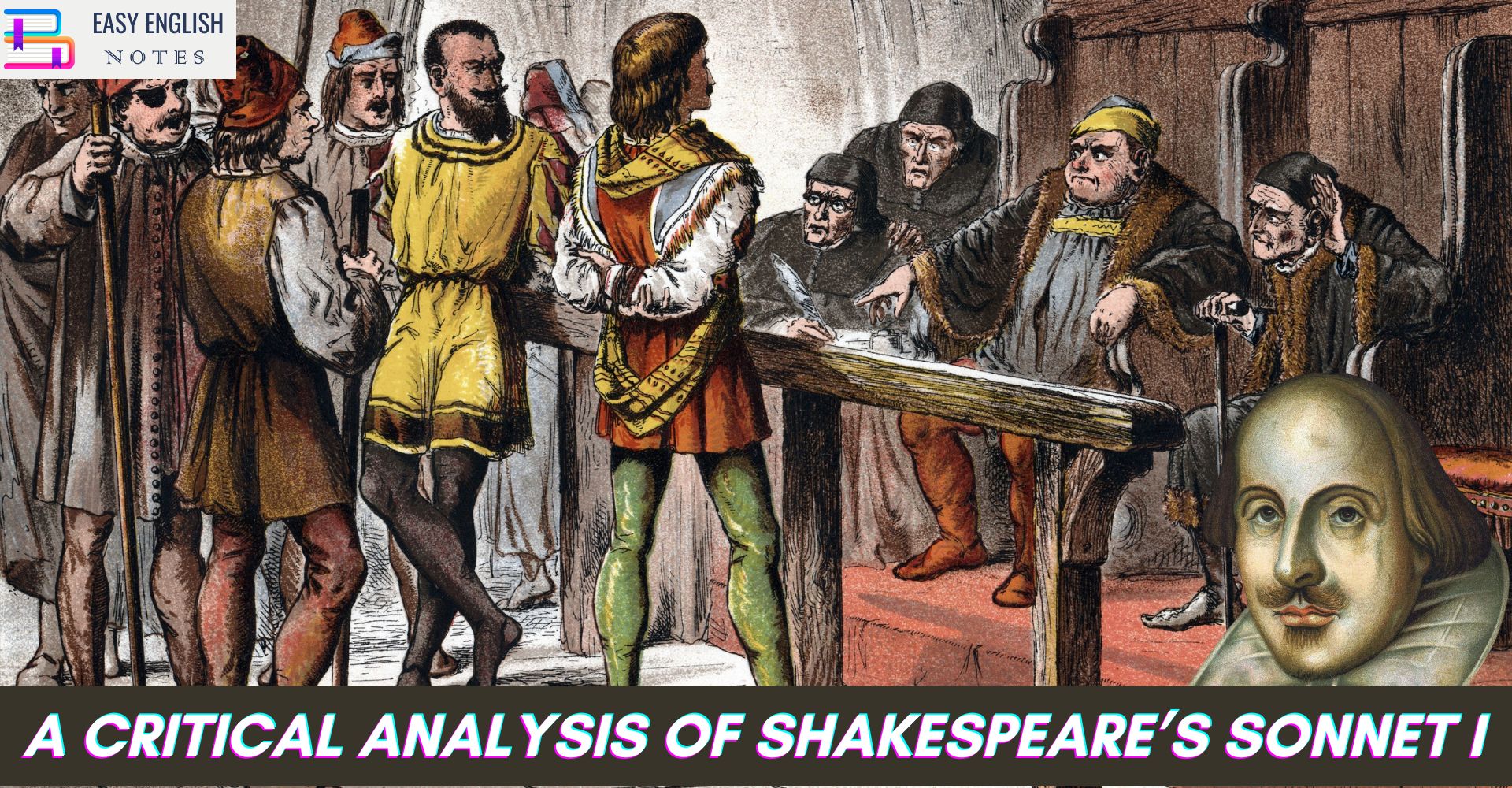Sonnet 1 by William Shakespeare is the opening poem in his famous collection of sonnets. This sonnet serves as an introduction to the themes that will be explored throughout the sequence, and it establishes the poet’s purpose and perspective. Through a critical analysis of Sonnet 1, we can examine its structure, language, imagery, and overall message.
so begin sonnet I in Shakespeare’s Sonnets. This opening sonnet is all about procreation, but also, perhaps, sexual pleasure. The first 17 poems that make up Shakespeare’s Sonnets are known collectively as the ‘Procreation Sonnets’, since they feature Shakespeare addressing the ‘Fair Youth’ and entreating him to marry and have children. ‘From fairest creatures we desire increase’ sets up this suite of procreation poems. In summary, what Shakespeare is saying in this sonnet is that it makes sense for beautiful creatures (including humans) to leave offspring, so that they pass on their beauty to the next generation, and their beauty thus lives on after they themselves have died.
But, Shakespeare continues, the Fair Youth is not interested in having children: he is wasting the best years of his youth and beauty in preening self-obsession when he should be finding a wife and having kids. Thus the abundance’ of his good looks is being made into a ‘famine’, since it is being squandered until, eventually, none of his youthful beauty will remain, and he’ll have nothing to show for it-no wife, no heir. This is selfish but it’s also hard on him, the Fair Youth: he is being cruel to himself by denying himself the chance to have a child and create an heir.
Right now, Shakespeare argues, the Youth is fresh and young, calling to mind the spring (with its connotations not only of freshness and newness, but also the birth of new life Shakespeare is strengthening the association between youth and bringing forth children here). But the Youth squanders his good looks by keeping them to himself.
Shakespeare concludes by advising the Fair Youth to pity the world that is jealous of his beauty, and give in to the world’s request that the Youth marry and reproduce. The alternative is to become a glutton- because if he devours all of his beauty himself rather than sharing some of it with the world, he’s greedy and selfish. The only one who would then share in the Youth’s beauty would be the grave, which feeds on us all in the end.
Several phrases in this opening sonnet call out for analysis. That opening line, ‘From fairest creatures we desire increase’, causes relatively few problems, but later in the poem things become a little more ambiguous. For instance, what are we supposed to read into ‘Feed’st thy light’s flame with selfsubstantial fuel”? Is the ‘fuel’ there a subtle reference to that ‘fuel’ of life, semen? Is this one of a number of coded allusions to masturbation in Shakespeare’s Sonnets? The word ‘content’ in the eleventh line raises a similar question: does it mean ‘content’ as in simply ‘contents’ or ‘things contained”, or ‘content’ as in ‘satisfaction’, with the possible sexual connotations of such a word? The reference in the next line to the Fair Youth making ‘waste’ also anticipates the reference in one of the later sonnets to ‘Th’ expense of spirit in a waste of shame / Is lust in action’, lines commonly interpreted to be a reference to masturbation. Shakespeare may simply be chiding the Youth for being self regarding; he may also be hinting at the other things he is ‘wasting’ by not getting married and procreating.
Also Read :
- Compare Hamlet with Macbeth, Othello and other Tragedies
- “The Pardoner’s Tale” is the finest tale of Chaucer
- Prologue to Canterbury Tales – (Short Ques & Ans)
- Confessional Poetry – Definition & meaning
Sonnet 1 from Shakespeare’s Sonnets starts the sequence off in style, with a clear message but some rather less clear-cut phrases and images which leave us guessing. Those ‘fairest creatures’ lead neatly into the Bard’s analysis and depiction of the Fair Youth, with his vanity and stubbornness and beauty, that we find in the sonnets that follow.
Moreover, the emphasis on procreation in Sonnet 1 can be interpreted as a societal expectation or pressure placed upon individuals, particularly in Shakespeare’s time. The poet’s exhortation to “beauty’s pattern to succeeding men” suggests that the pursuit of procreation is a social duty, one that ensures the continuation of the human race and the preservation of beauty through lineage. This theme aligns with the prevailing Elizabethan ideals of family and heritage.
However, it is important to consider the complexities and limitations of interpreting Sonnet 1 through a contemporary lens. While the poem may appear to reinforce traditional gender roles and heteronormative expectations, it is essential to acknowledge that Shakespeare’s sonnets are open to diverse readings and interpretations. The addressee of the sonnet is not explicitly gendered, leaving room for a broader understanding of the poem’s themes.
Furthermore, Sonnet 1 is just the beginning of Shakespeare’s sonnet sequence, which encompasses a wide range of emotions, relationships, and perspectives. The subsequent sonnets challenge and complicate the ideas introduced in the opening poem, exploring themes such as desire, love, betrayal, and the power of language. Therefore, a comprehensive analysis of Sonnet 1 must also consider its place within the larger context of the sonnet sequence.
In conclusion, Sonnet 1 by William Shakespeare serves as an introductory piece that establishes key themes and perspectives explored throughout his sonnet sequence. Through its structure, language, imagery, and themes of beauty, time, and procreation, the poem invites readers to contemplate the transient nature of physical attractiveness, the significance of procreation, and the pursuit of immortality through artistic expression. Sonnet 1 sets the stage for a rich and nuanced exploration of human experience and emotion that unfolds in the subsequent sonnets, making it a compelling and enduring piece of poetic literature.
PLEASE HELP ME TO REACH 1000 SUBSCRIBER ON MY COOKING YT CHANNEL (CLICK HERE)











